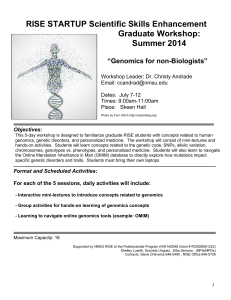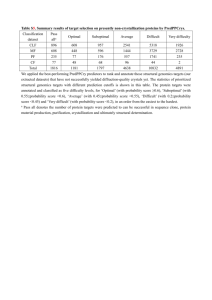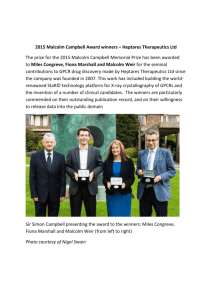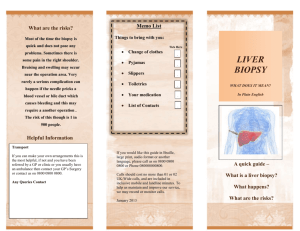Math Minute 2
advertisement
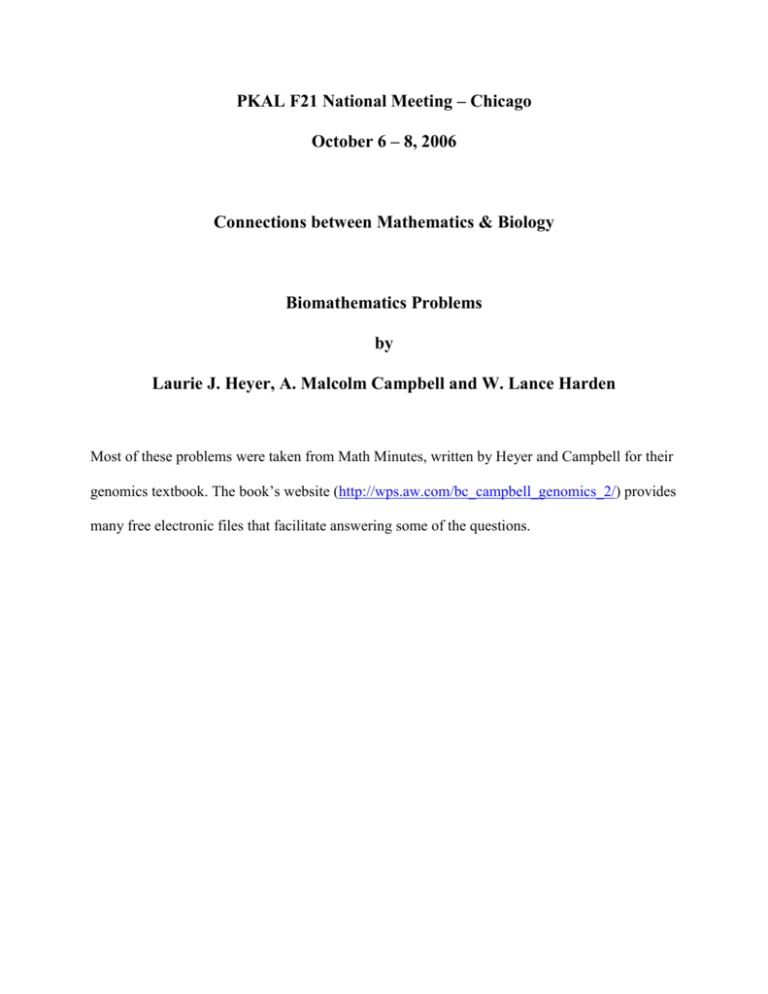
PKAL F21 National Meeting – Chicago October 6 – 8, 2006 Connections between Mathematics & Biology Biomathematics Problems by Laurie J. Heyer, A. Malcolm Campbell and W. Lance Harden Most of these problems were taken from Math Minutes, written by Heyer and Campbell for their genomics textbook. The book’s website (http://wps.aw.com/bc_campbell_genomics_2/) provides many free electronic files that facilitate answering some of the questions. Biomathematics Problem 8 How do you know if you have sampled enough cells? The ideal situation when measuring the diversity of cell types in a tissue is to evaluate every cell in the tissue. However, it is impossible to evaluate every cell of a liver without killing the patient, so we take biopsies. How big should the biopsy be? How many cells should we sample to get an idea of the entire organ’s composition? A hidden assumption in a biopsy is that the frequency of cells in a biopsy is the same as the frequency of cells of the entire organ. The validity of the assumption depends on how large the sample is, compared to the size of the organ. For example, suppose an organ of 109 cells contains an equal number of cells from each of 37 types of cells. If 108 cells (10%) are sampled from the organ, it is more likely that the biopsy contains an approximately equal number of each cell type than if only 107 cells (1%) are sampled. If one cell type were to comprise only 1% of the liver’s total population of cells, a very small sample might miss the cell type completely, or collect too few cells from the cell type to be measured. Questions 1. If a population contains 100 cells from each of 3 different cell types (a total of 300 cells), what is the fewest number of cells you could sample to have a 95% probability of accurately measuring the frequency of the 3 cell types? 2. Suppose we have a population containing 200 cells of type 1, 97 cells of type 2, and 3 cells of type 3. In other words, the population is the same size as in our previous example (300 cells), but strain 3 comprises only 1% of the population. What is the probability that a sample of 60 cells from this population contains at least one cell of type 3? How many cells would you need to sample to have a 90% probability of collecting at least one cell of type 3? 3. How many cells need to be in the liver biopsy if you want a 99% probability of sampling all 37 cell types when one cell type constituted 1% of the liver’s total cell count? References A. Malcolm Campbell and Laurie J. Heyer. Discovering Genomics, Proteomics & Bioinformatics 2E. (February, 2008). Cold Spring Harbor Laboratory Press and Benjamin Cummings. <http://awl.com/genomics> A. Malcolm Campbell and Laurie J. Heyer. Instructor’s Guide to “Discovering Genomics, Proteomics & Bioinformatics”2E. (March, 2006) Benjamin Cummings Harden, Lance and Laurie J. Heyer. Do-It-Yourself Gene Assembly Gene Synthesis Optimization Program. <http://gcat.davidson.edu/IGEM06/oligo.html>. Accessed 24 August, 2006.
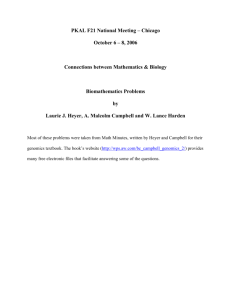
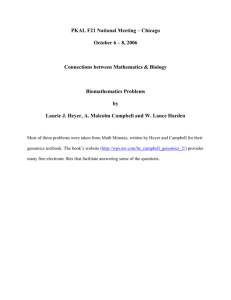
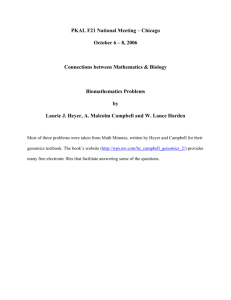
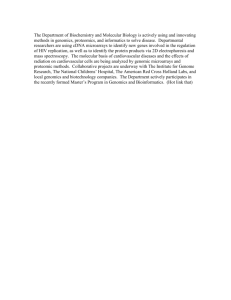

![9_Komlenac - start [kondor.etf.rs]](http://s2.studylib.net/store/data/005352037_1-bdc91b0717c49a75493200bca431c59c-300x300.png)
